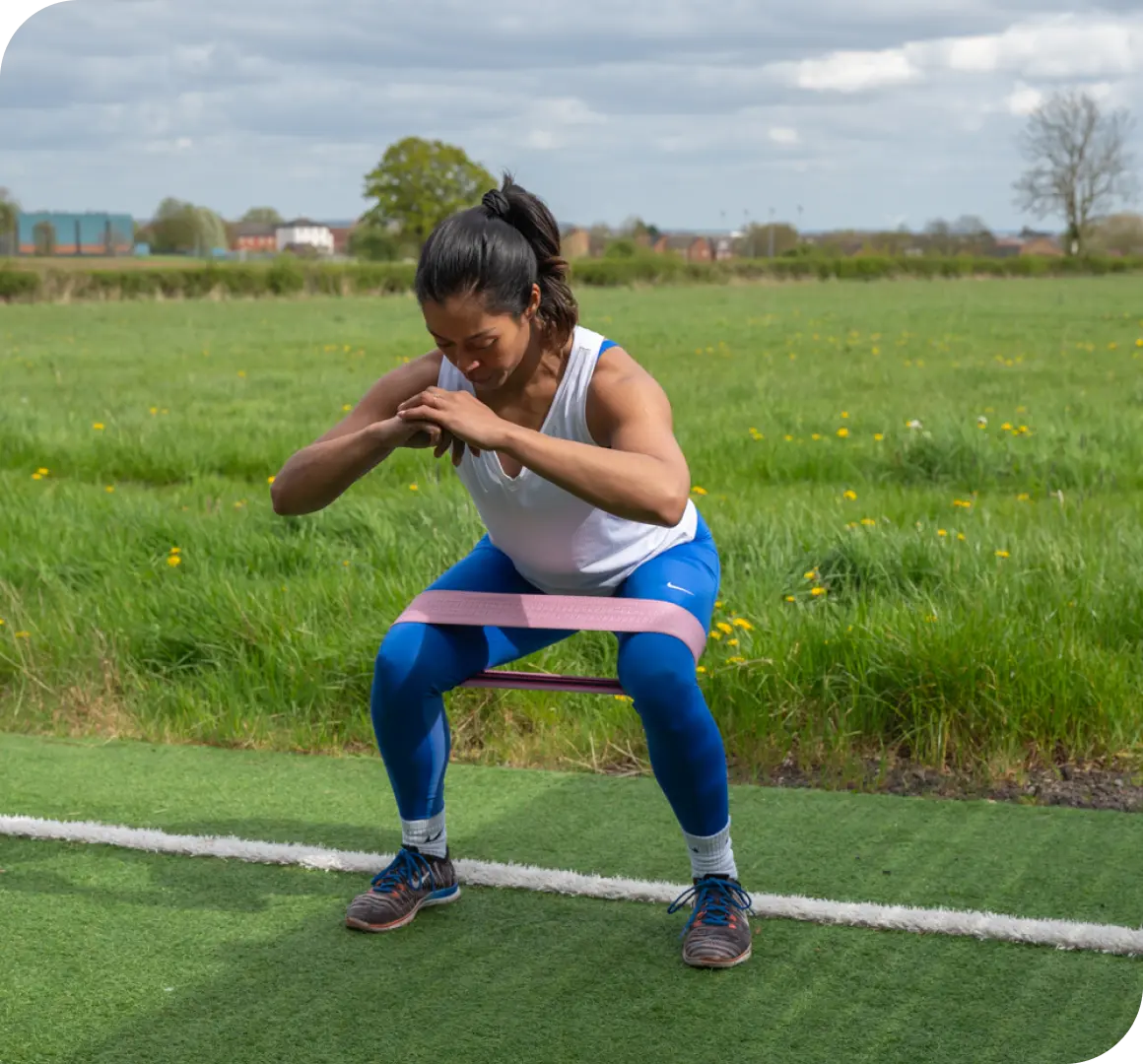
Squats are one of the most fundamental exercises in any fitness regime, renowned for their ability to build strength, endurance, and overall athleticism. However, they aren’t the easiest to perform correctly and this seemingly simple movement incorrectly can lead to a range of injuries. This includes minor strains to serious joint and muscle damage.
So, whether you’re new to squats or a seasoned lifter, understanding how to do a correct squat is crucial to maximise your workout benefits and protect yourself from harm. In this blog, we will break down the correct technique, highlight common mistakes, and offer Angelica’s top tips to maintain good form, ensuring that your squats are both safe and effective.
The Importance of Squatting Correctly
Before we go into the specifics of how to do a correct squat, it’s essential to understand why proper form matters. Squats engage multiple muscle groups, including the quad muscles, hamstrings, glutes, and core. Therefore, when performed correctly, they help build lower body strength, improve mobility, and enhance your overall functional fitness. However, poor technique can place undue stress on the knees, lower back, and hips, leading to injury which can disrupt your entire training schedule and progress.
How to Do a Correct Squat
Here is a step-by-step guide on how to do a correct squat:
- Set Your Stance
The first step in learning how to do a correct squat is getting your stance right. You should stand with your feet shoulder-width apart, toes pointing slightly outward. This position allows for optimal balance and engages all of the correct muscle groups. Your weight should be distributed evenly across your feet, with a slight emphasis on the heels to ensure stability throughout the movement. This will help to make you feel more stable.
- Engage Your Core
A strong core is vital for maintaining proper posture during a squat. Before you begin, engage your abdominal muscles by drawing your belly button towards your spine. This action helps stabilise your torso and reduces the risk of straining your lower back.
- Initiate the Movement with Your Hips
One of the most common mistakes people make is bending their knees first. Instead, initiate the squat by pushing your hips back as if you are sitting down in a chair. This movement ensures that your knees stay aligned with your toes and reduces extra pressure on your knee that could lead to knee injuries.
- Lower Yourself into the Squat
As you lower yourself, keep your chest up and your back straight. Your knees should be over your toes but not extend beyond them. Aim to lower your body until your thighs are parallel to the ground, or as low as your mobility allows without compromising form. At first, you may struggle to go to full depth in your squat, but over time you’ll be able to go deeper. At the bottom of the squat, your knees should form a 90-degree angle, and your weight should remain on your heels.
- Drive Up Through Your Heels
To stand back up, push through your heels while simultaneously squeezing your bum. This action will help you maintain your balance. As you rise, keep your chest lifted and your core engaged, returning to the starting position without locking your knees at the top.
Common Mistakes to Avoid
Even when you know how to do a correct squat, it’s easy to fall into bad habits that can lead to injury. Here are some of the most common mistakes to watch out for:
- Allowing the Knees to Collapse Inward
A common error, especially for beginners, is letting the knees cave inward during the squat. This inward movement, known as knee valgus or knocked knees, can place significant strain on the knee joints and ligaments, increasing the risk of injury.To avoid this, focus on keeping your knees aligned with your toes throughout the movement. If you struggle with this, consider using resistance bands around your thighs to encourage proper alignment.
Tips for Maintaining Good Form
Now that you understand the basics of how to do a correct squat and the common pitfalls to avoid, here are some of Angelica’s additional top tips to ensure your form remains solid:
- Warm Up Properly
Never skip a warm-up before squatting. Engaging in dynamic stretches and mobility exercises will prepare your muscles and joints for the movement, reducing the risk of injury. Pay particular attention to your hips, knees, and ankles.
- Start with Bodyweight Only
If you’re new to squatting or have had issues with your form in the past, start with bodyweight squats before adding any load. This approach allows you to focus on technique without the added pressure of weights. Once you’re confident in your form, you can gradually increase the resistance.
- Don’t Rush the Process
Squatting is a skill that takes time to master. Focus on quality over quantity, ensuring each squat is performed with proper technique. If you’re struggling, don’t hesitate to seek advice or guidance. Our client testimonials show how beneficial professional guidance can be in perfecting squat form and avoiding injuries.
The Need for Professional Guidance
While self-study and practice are vital, there’s no substitute for professional guidance when learning how to do a correct squat. Whether you’re attending in-person sessions or opting for online fitness classes, as a qualified trainer, Angelica, can provide the expertise and personalised advice necessary to perfect your squat technique.
Consider taking advantage of our 7 day free trial to get professional feedback on your form. With the right approach, you can master the squat and make it a key aspect of your fitness routine.